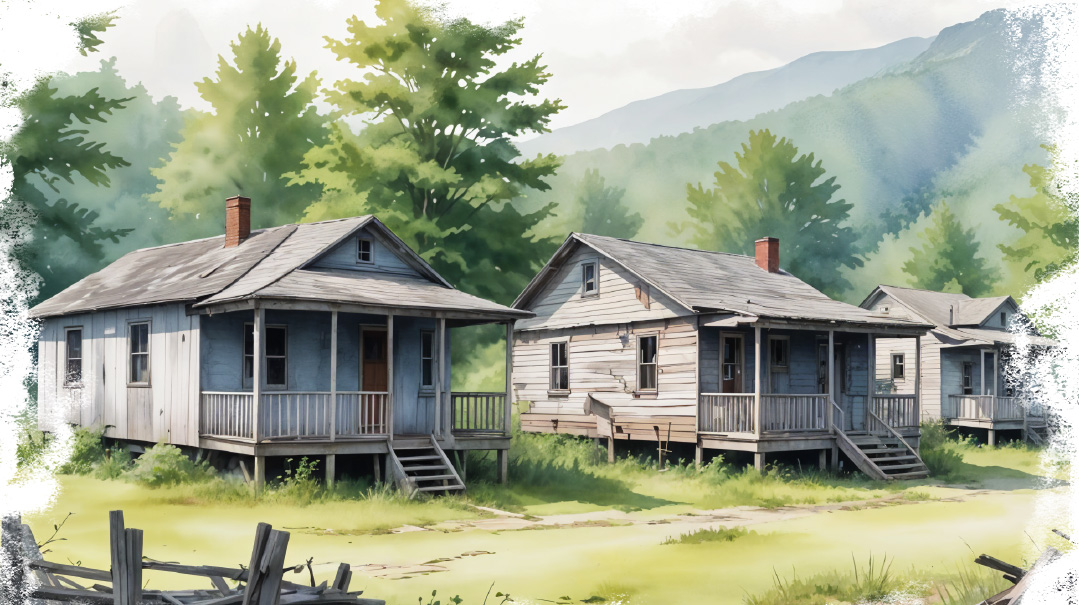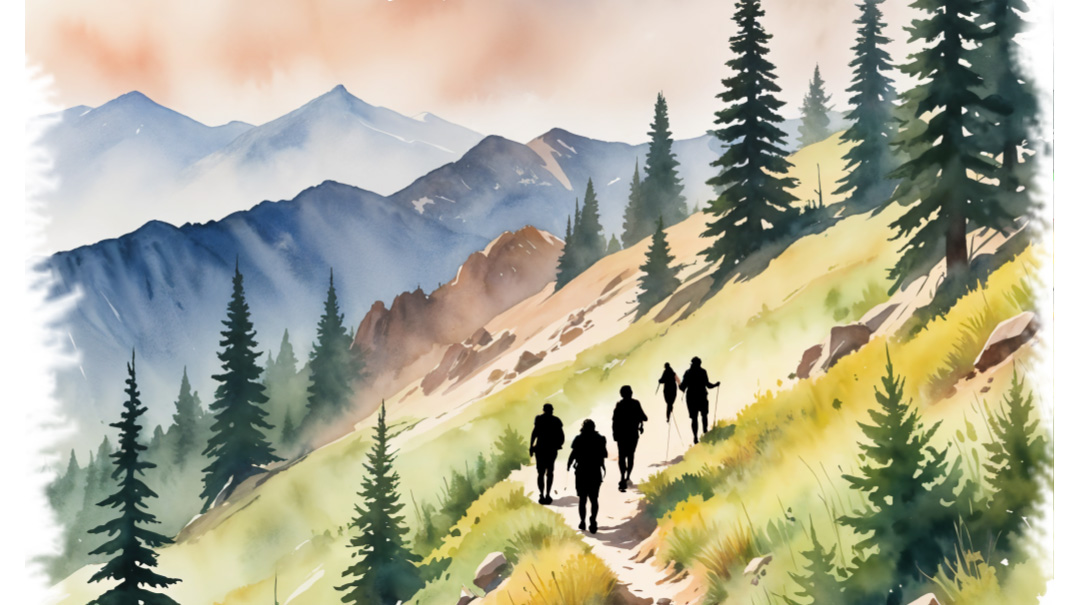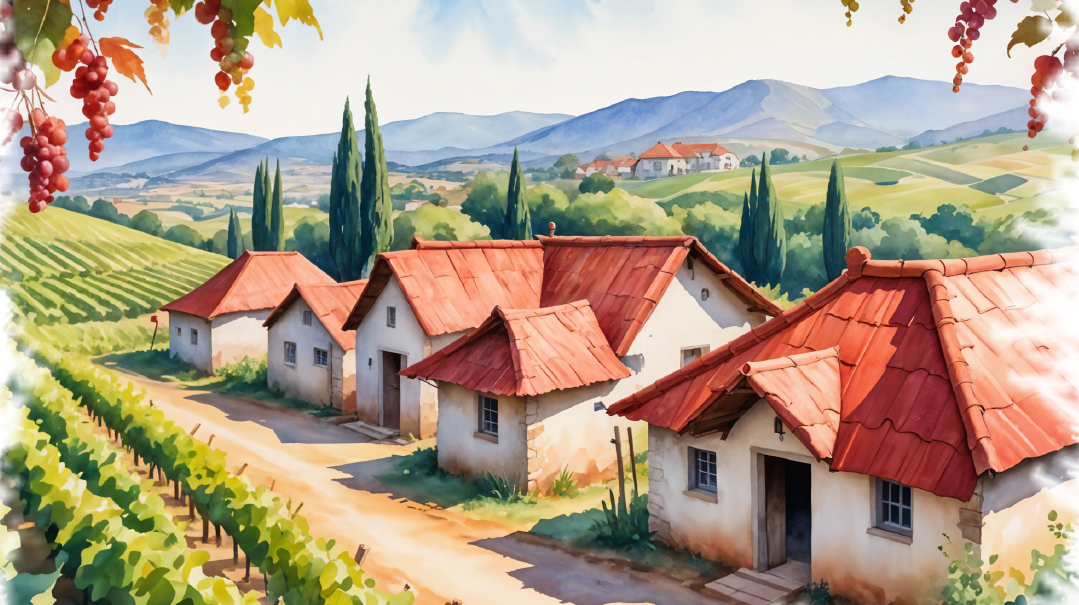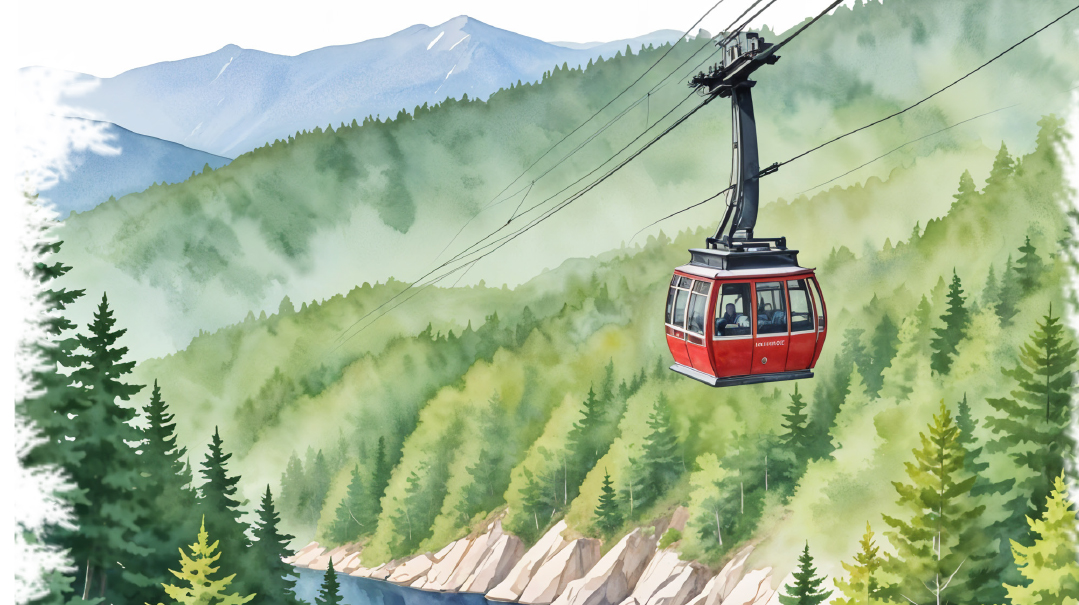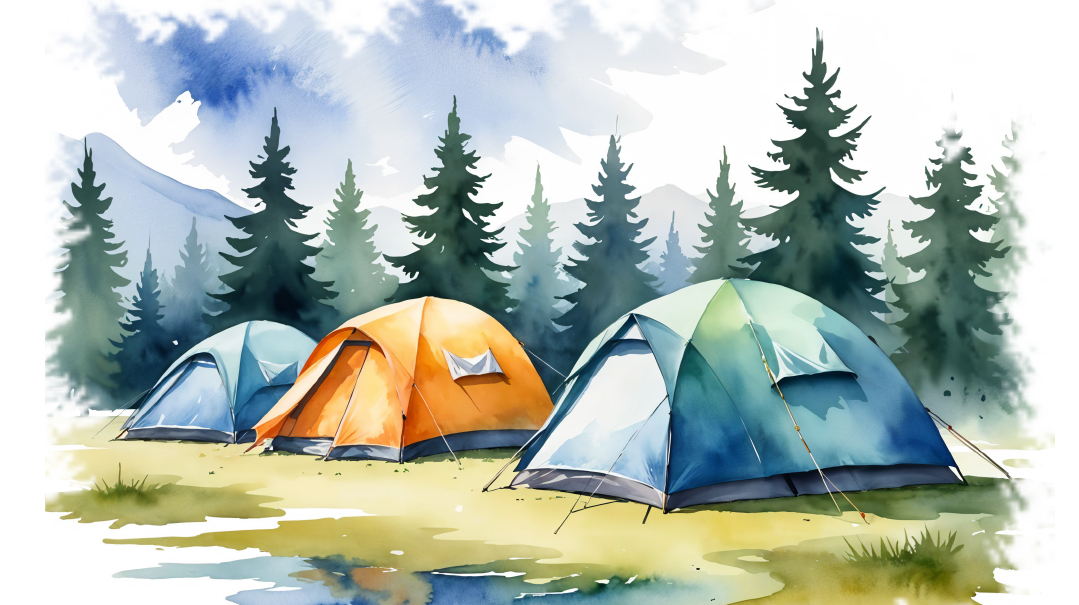Sands of Time
| August 14, 2024Mishpacha contributors share accounts of those special summers disconnected from the grind
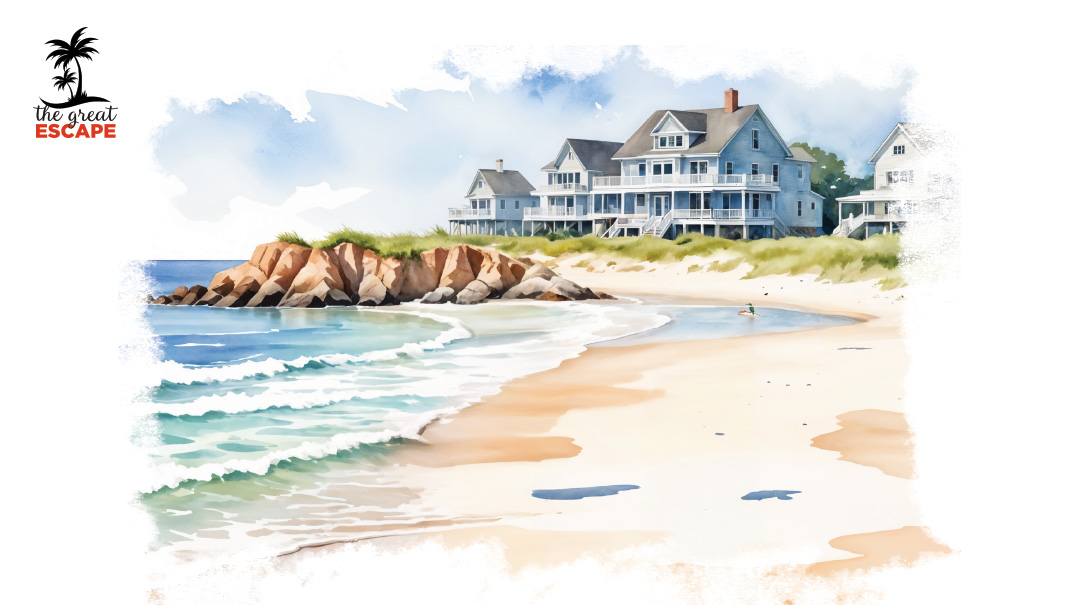
Location: Holden Beach, North Carolina
Years: Mid-80s through mid-90s
Every summer since I was three years old, my father, mother, younger brother, and I would pile into the family car and drive more than 20 hours from our home in the Midwest to the Outer Banks of North Carolina, a line of islands off the coast that separates the Atlantic Ocean from the mainland. It was where we would spend practically the entire summer.
This tradition began because my paternal grandparents lived in Wilmington, North Carolina, about an hour from the ocean, and we’d rent a home on the beach whenever we visited them. My parents loved the experience so much that when I was seven, they decided to build a house on Holden Beach, a quiet private beach in the southern Outer Banks.
Excitement would mount as we approached the island, and my brother and I would put down our books and games and peer eagerly for the first glance of the tall, curved bridge that would transport us over the intracoastal waterway to our island. The railings of that two-lane cement bridge were not tall, and in the years we drove a Jeep Grand Cherokee, the car sat so high and the rails were so low that it appeared we were driving in the air with only the water below us. (This might be where my fear of bridges originated.)
Once safely over the bridge, we would turn right and make our way west. We’d crane our necks as we drove down Ocean Avenue, looking up at the rows of beautiful houses that stood tall — and safe, because all of the newer beach houses were built on stilts. This was a precaution against storm surges that would come with hurricanes, which hit the island maybe once in a decade but were a constant and unpredictable threat. (This safety feature meant that every home essentially started at the second story, except for the older homes on the east end of the island which were still built on ground level. On the rare occasion we ventured that way, I felt a combination of smugness that our house was on stilts, as well as a curious concern about what would happen to the east end when the water rose.)
Our home, which we had named “Our Summer’s Dream,” was close to the end of the island; after all of our driving, the route from the bridge to the house felt impossibly long.
On one side of our two-story house with its large screened-in front porch was an empty lot. On the other side was a tennis court we did not have access to, that was mostly unused whenever we were there. But when we first arrived, my brother and I wouldn’t take in the surroundings. We’d fidget with impatience until finally, my father would pull up into the ground-level driveway that sat under our house on stilts — and then we’d burst out of the car, inhaling deep breaths of briny beach air as we flew around the house, past the outdoor shower with its wooden stall, and up the stairs through the back door.
Once inside, we’d take in the pine-paneled walls adorned with sea-themed artwork both purchased and homemade, admiring the seashells that had been painted and glued to pieces of driftwood we’d found washed up on shore. A small kitchen overlooked the dining and family room, where we played card and board games when the weather was gloomy. Everything associated with the house was both familiar and foreign, not unlike when your memory of a friend you haven’t seen in many years doesn’t entirely align with the real version, but there are warm feelings regardless.
Our Summer’s Dream wasn’t a beachfront property — those homes had private walkways that led straight to the beach — but it was second row, which meant we just had to cross the main road and use the beach access walkway across the sand dunes. Luckily there was a walkway directly opposite our house so we didn’t have to walk too far. We’d know we were steps away when the sand, dry, lightly colored, and scorching hot, would sneak its way onto our flip-flops. We’d hop and run dramatically toward the darker, more compacted sand that had been cooled by the tides. We relished that initial sensation of standing in the soothing wet sand and sinking into it as the surf came in and rushed past our toes and up to our ankles, relieving our feet of the burn.
We’d arrive at the beach in the morning, spreading our towels and setting our chairs in a spot that was close — but not too close! — to the water, adjusting ourselves with the tide. We’d spend our time building castles, digging moats and trenches, burying our feet, our legs, ourselves in the sand. As I got older, I would also spend hours reading, my books’ covers and pages growing soft from the sea air. The background was always a cacophony of sound, gulls cawing and waves breaking on the shore.
When we wanted to cool off, we’d take our boogie boards (like the kickboards kids use for swimming lessons that attach to your wrist with a Velcro band and cord) and wade out waist- or chest-deep to ride the small waves to the shore, only to rush back out to wait for another suitable wave. Sometimes we would just float, nestled in the warmth of the water, attuning ourselves to the ebb and flow of the ocean. As a wave began to form, we would feel the tug of water being pulled to sea. Then we could either be lifted with it, or if it looked too big, submerge briefly before popping back up into the bright summer sun, wiping salty water from our eyes with water-pruned fingers.
At the end of the day, when we finally returned to our beach house, we’d use the outdoor shower to try and rinse of the layer of salt and sand from the beach. It was a futile task; the sand followed us everywhere despite our best efforts.
Being on the beach meant we were in for a unique wildlife experience. As we stood in the surf, we would sometimes feel the wriggling sensation of mussels beneath our feet. We’d kneel in the sand, digging to unearth these little mollusks in their tiny shells and watching as they diligently buried themselves back into the packed sand to escape the sun and heat.
Sand crabs would scuttle — a distinctive side-crawl — and we loved spotting them as they raced from the safety of one hole to another. Seagulls were ubiquitous, of course, but there were also sandpipers, smaller birds that would hop on the sand to our amusement.
We’d often see little schools of small minnow-like fish swimming in formation. Less frequently spotted were jellyfish, which usually kept to the deeper water but would sometimes drift closer to shore, causing a frenzy of panic when we spotted their dangerous, beautiful tentacles.
The wildlife memory that stands out most was the summer we participated in the phenomenon of sea turtle eggs hatching. The island had a Turtle Watch Association, year-round residents who would walk around identifying nests, which they would protect by fencing them off with four wooden posts topped by florescent orange plastic ribbons. The summer they cordoned off a small square near our house, we constantly checked if there was movement in the sand, indicating the eggs were starting to hatch. As the anticipated date grew closer, the Turtle Watch dug a trench in the sand from the nest to the ocean. Sea turtles hatch when it’s dark, and we were told the lights from our houses could confuse hatchlings, who were guided toward the ocean by moonlight; these trenches directed them to the ocean instead of toward the houses. When the night finally arrived, we gathered at the end of the trench near the water, holding flashlights and silently cheering those little turtles as they emerged from their cozy nest and struggled to make their way to the ocean.
Once or twice a summer, one of my parents would agree to accompany us all the way to the west end. It was a decent walk, at least an hour, to the very end of the island, which was a special treat for us. We’d walk by our home and head west, past fancy private homes that were guarded by security gates. Rumor had it that some movie stars lived there, but we never saw them.
We’d carry plastic shopping bags to collect interesting shells and driftwood, and to pick up stray garbage on the beach, as well. At low tide, the beach would stretch on and on, getting longer as we walked. The houses sat farther from the water, and we would seek treasures in the tidal pools formed by low tide. The pools themselves were treasures, really, miniature bodies of water that came into existence only when the greater water of the Atlantic Ocean receded.
Some pools were shallow ridges of sand created by the lapping water visible just beneath the surface, while others were deeper and more mysterious. If we were brave enough to wade through them, we knew we risked being nipped on the toe or heel by a crab in its temporary home.
At the very end of the island, you could see the shore of the next island over; though it was too far to see any real detail, I would imagine another little girl standing on that shore, looking at me.
It was also a treat when we convinced our parents to let us walk in the other direction to the pier, which we could just barely see in the distance. I don’t think we ever actually made it all the way there — the pier was much farther than it seemed — and that part of the beach was more crowded, so either we (or more likely our parents) would eventually tire of walking and turn around. Occasionally we’d drive to the pier and then walk to the end, past the fisherman with their poles and boxes of fish (if they had been successful) or water (if they had not). It was unsettling to walk so far out above the ocean, aware that below the waves were currents more powerful than we could fathom and that only this man-made wood-and-cement structure kept us safe from the quiet power of the Atlantic.
IN1989, Hurricane Hugo hit Holden Island. Our house experienced minimal damage, but the east end of the island was bitterly affected. It had been eroding for some time, the tides slowly removing sand from the east end and depositing it closer to the west end. Every year, the high tide came closer to their homes, most of which were not on stilts. Sometimes the water came right up to the dunes, the beach access walkways leading to nothing but the ocean.
Hugo obliterated these vulnerable homes, and the following summer, as we drove down that side of the island, we witnessed the apocalyptic scene: the main road leading straight into the ocean. It was blocked off by a large metal gate, and as we walked past the barrier, we observed with awe how the once-smooth asphalt was pockmarked with holes of various sizes, filled with oceanwater, sand, and shells.
When I was in high school, my parents sold the house. At that point we were only able to go down for a couple weeks in the summer, and it was no longer sustainable to own a second home.
I hadn’t thought about Holden Beach for quite some time, until a recent conversation I had with my younger brother.
“Hey, did you know we’re going to the beach house this summer? We wanted to take trip to the East Coast in August, and the house was available to rent,” he said. “Mom’s coming down with us.”
As I hung up the phone, I tried to reconcile my complicated feelings. Reliving my Outer Banks memories is bittersweet; I’m glad my mom will create new memories with the next generation, but I’m sad because we can’t join — it’s just not a great vacation spot for my frum family (I spent my time at the beach long before I converted to Judaism at age 25).
Then again, I may not be giving them the beach, but as I watch my children form their own summer memories, of camp and road trips and long Shabbosim, I’m endlessly grateful.
Rivki Silver is a regular contributor to Family First and cohost of the Deep Meaningful Conversations podcast.
(Originally featured in Mishpacha, Issue 1024)
Oops! We could not locate your form.

